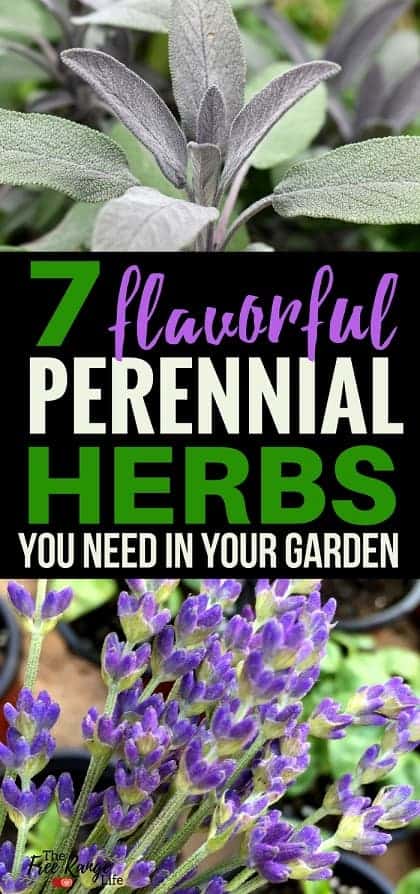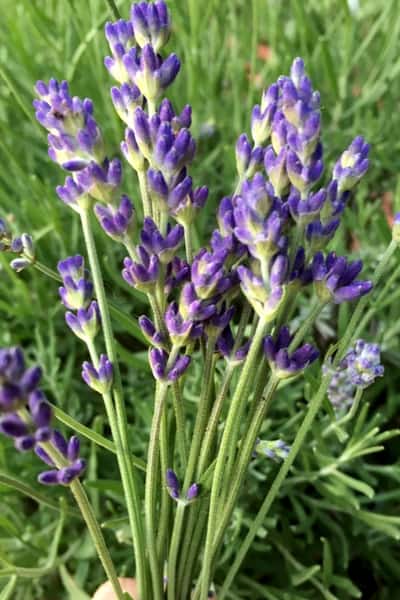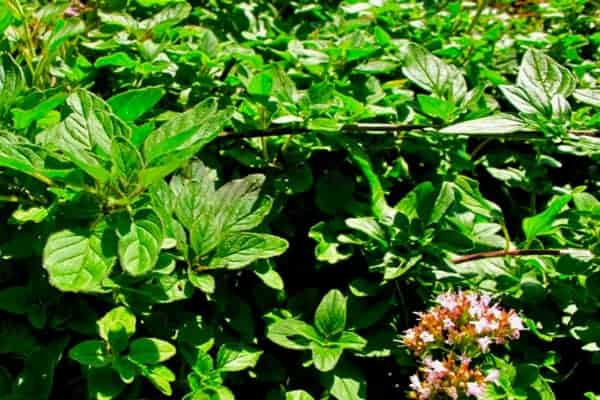Perennial herbs are some of the easiest plants to grow in your garden. They require little to no work and give you years of harvests.
Many perennial herbs are also ornamental, so you can scatter them throughout your flower beds and landscaping around your house.
This site contains affiliate links. If you make a purchase using one of these links, I may earn a commission. Please see my disclosure page for more information about cookies collected and our privacy policy.
These herbs also make great companion plants in the vegetable garden!
7 Perennial Herbs to Grow This Year
Before we get to the list of perennial herbs, let’s talk a little about what a perennial is. A perennial herb is an herb that will live for more that 2 years without having to reseed.
Some herbs, such as Parsley, are biennials, meaning they live for 2 years.
There are also self seeding annuals that are sometimes mistaken for perennial herbs. These are herbs like cilantro, dill, and calendula that will go to seed and those seeds will sprout the following spring.
Now let’s move on to the true perennial herbs. The following herbs will come back year after year in most zones.
Sage
Sage is one of my favorite perennial herbs, both for culinary uses and beauty. Sage is beautiful when it flowers and looks great as part of a flower bed.
Sage isn’t hard to grow from seed, though it will takes some time to cultivate before planting outside. Most nurseries will have sage in stock.
Sage can get woody on the bottom after a few years, so be sure to do regular prunings to encourage new growth.
Read more about the Benefits of Sage.
Thyme
Thyme is another perennial herbs that is a staple in most gardens. There are different varieties of thyme, some being more vigorous and hardy than others. Because of its habit of creeping, thyme can also be used as a ground cover or edging in the flower garden.
Thyme is easy to grow from seed, though it does have a long germination length. Simply sow the seeds on top of the soil and keep them moist, but not wet. Once seedlings are about 3 inches in height you can safely plant them in the garden.
Thyme is a relatively hands-off perennial herb and can thrive in all sorts of different conditions. You can also propagate more plants by rooting cuttings.
Lemon thyme is particularly vigorous and makes for a nice addition to the kitchen!
Read more about Why You Should Grow Thyme.
Lavender
Lavender is one of my favorite medicinal perennial herbs. I have a dream of having a huge field of lavender one day!
Lavender has so many medicinal benefits and can be added to foods and drinks as well. Lavender is tricky to start from seed but you can purchase plants from a local nursery and start more plants from cuttings.
Lavender is hardy is most zones, but be sure to choose a variety that is suited for your area or consider growing it in a container where you can move it to a sheltered location during the cold winters.
Lavender doesn’t like to have wet roots, so make sure you provide soil with good drainage.
Rosemary
Rosemary is a woody evergreen perennial herb. If you live in a cold climate you may need to bring it indoors during the winter to protect it. Rosemary can grow quite large, so be sure to give it room or trim it into the space you need it to fit.
Rosemary propagates easily in water- just snip off a stem and stick it in a vase of water for a few days until roots appear. Since I plant my rosemary in the ground, I like to take multiple cuttings in the fall to grow indoors during the winter just in case we hit record low temperatures and my main plant dies.
Rosemary can be used to add flavor to a lot of culinary dishes and preserves well by drying to use whenever you need it. (Here’s how to dry rosemary)
Oregano
Oregano is a very hardy perennial herb that needs next to no care. It does have the tendency to self seed and spread even more if you allow it to flower and go to seed, so be prepared to have a very large oregano patch.
Oregano is easy to grow from seed and grows quickly. One oregano plant can go a long way when it comes to using it in dishes. You can cut the plant back continuously throughout the growing season to prevent flowering and extend your harvest. It’s super easy to dry oregano, and one plant will give you more than enough for the entire year!
The play will die back in the winter but new growth will start growing again as soon as the weather is warm.
Related Reading: The Many Benefits and Uses of Oregano
Tarragon
Tarragon is not as common as other perennial herbs, but it adds a lot of flavor to your kitchen and your garden. There are 2 main types of Tarragon- French and Russian, with French giving a more desirable flavor.
French tarragon must be produced from cuttings, while Russian tarragon can be grown from seed.
Tarragon has a lot of benefits beyond the culinary. You can read The Nutritional and Medicinal Benefits of Tarragon to learn more about this herb.
Mint
Mint is a large family of perennial herbs that has a ton of uses both in the kitchen and in the home.
There are a ton of different mint varieties including peppermint, spearmint, wintergreen, chocolate mint, and catmint to name a few.
The main thing to remember when growing mint, is that it can be rather invasive. You can plant a small amount and eventually it will take over your entire garden!
Mints can be a great addition to a decorative flower bed or a butterfly garden.
A perennial herb garden is perfect for borders and kitchen gardens that allow the herbs to be easily accessible for cooking. The fact that they are perennials means you only have to plant once and be rewarded year after year!
What herbs grow in your perennial garden?
You May Also Like:
11 Tips for Beginning Gardeners
11 Vegetables You Can Grow Before the Last Frost
20 Recycled Seed Starting Containers






I really love planting herbs, this article was really helpful with making recommendations on what herbs you should have in your garden.
Great article but what about Lovage? A stunningly tasty perennial that belongs in every herb garden.